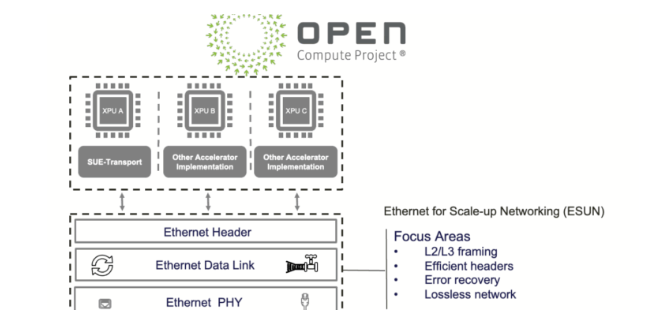The most significant announcement at the recent OCP Summit in San Jose a couple of days ago was undoubtedly the launch of the ESUN (Ethernet for Scale Up Network) Working Group. Fiber Online has also covered this development before. Now, several days later, looking back at this news, it prompts a critical question: Since its establishment, the Open Compute Project (OCP) has centered on open source—starting with white-box switches for data centers and later expanding to OpenRAN for mobile networks. Neither initiative has achieved remarkable success, with OpenRAN still struggling in particular. Entering the AI domain, can open source triumph over closed ecosystems this time? And can ESUN truly "lead the future of artificial intelligence"?

The founding members of the ESUN Working Group include AMD, Arista, ARM, Broadcom, Cisco, HPE Networking, Marvell, Meta, Microsoft, NVIDIA, OpenAI, and Oracle. Its core mission is to address challenges related to "scalable connectivity in AI-accelerated infrastructure." Initially, its focus will be on Layer 2/Layer 3 (L2/L3) Ethernet frame structures and switching functions, aiming to implement robust, lossless, and error-recoverable single-hop and multi-hop topologies.
According to an OCP press release, ESUN is defined as an "open technical forum" that emphasizes interoperability between Ethernet switch Application-Specific Integrated Circuits (ASICs) and XPU network interfaces. Its operations will adhere to the following principles:
An OCP spokesperson stated: "OCP’s mission is to accelerate innovation through openness and collaboration, and ESUN is the logical next step in positioning Ethernet as the cornerstone of scalable AI infrastructure."
A previous article on Jidao commented that for the AI industry, the significance of ESUN is comparable to the popularization of the TCP/IP protocol in its era. It is expected to break the monopoly of closed ecosystems like InfiniBand, lower the barriers to AI infrastructure, and accelerate the iteration of large language models. A commentary on Electronic Engineering Album noted: "From this year’s OCP Global Summit, we can see that U.S. tech giants are joining forces with unprecedented intensity to drive a profound transformation—replacing proprietary network technologies with an open Ethernet architecture to build next-generation AI infrastructure. The core drivers behind this transformation stem from the urgent need to reduce costs, break vendor lock-in, and embrace greater flexibility and scalability."
Having worked in the network communications industry for decades, the editor has gained a profound insight: Westerners, especially Americans, excel at developing standards, engaging in superficial cooperation, and mastering marketing. However, the ultimate success of a technology depends on numerous factors. While open source is undoubtedly a promising direction, it faces immense challenges. For open source to succeed, it must foster a new ecosystem of beneficiary industries. Did OpenRAN fail to take off because it couldn’t compete with Huawei? Can ESUN—along with the previously launched Ultra Ethernet Consortium (UEC)—truly defeat NVLink? We remain watchful.